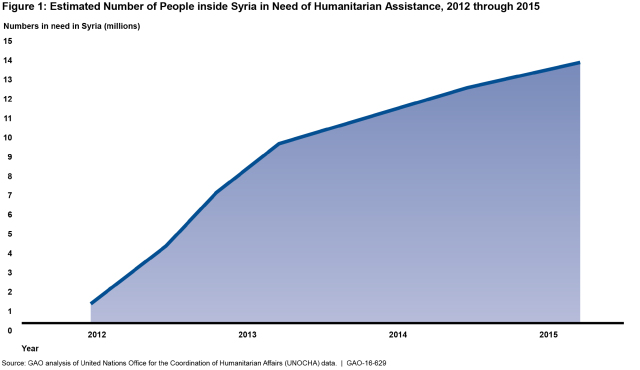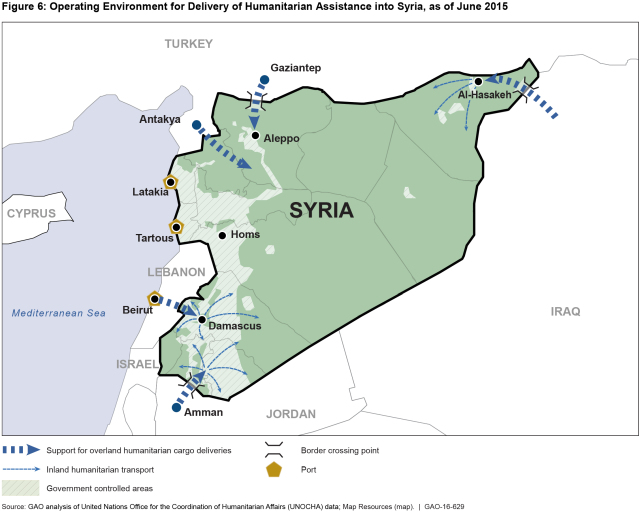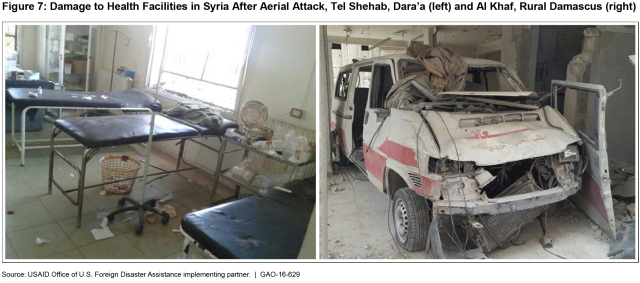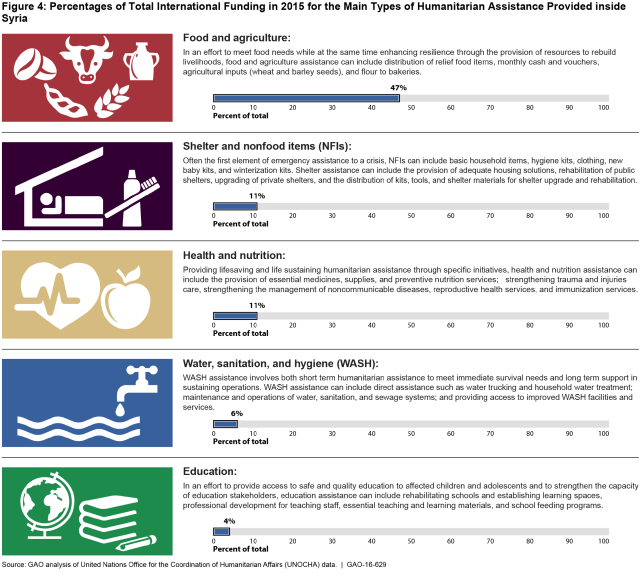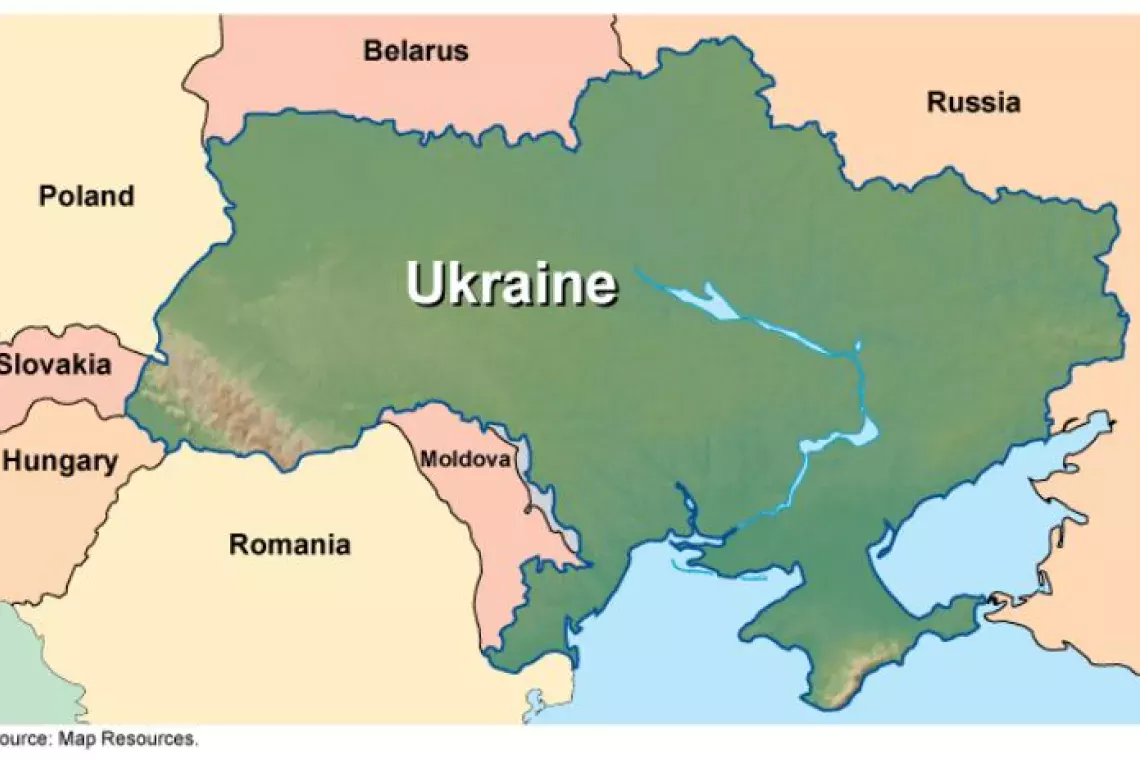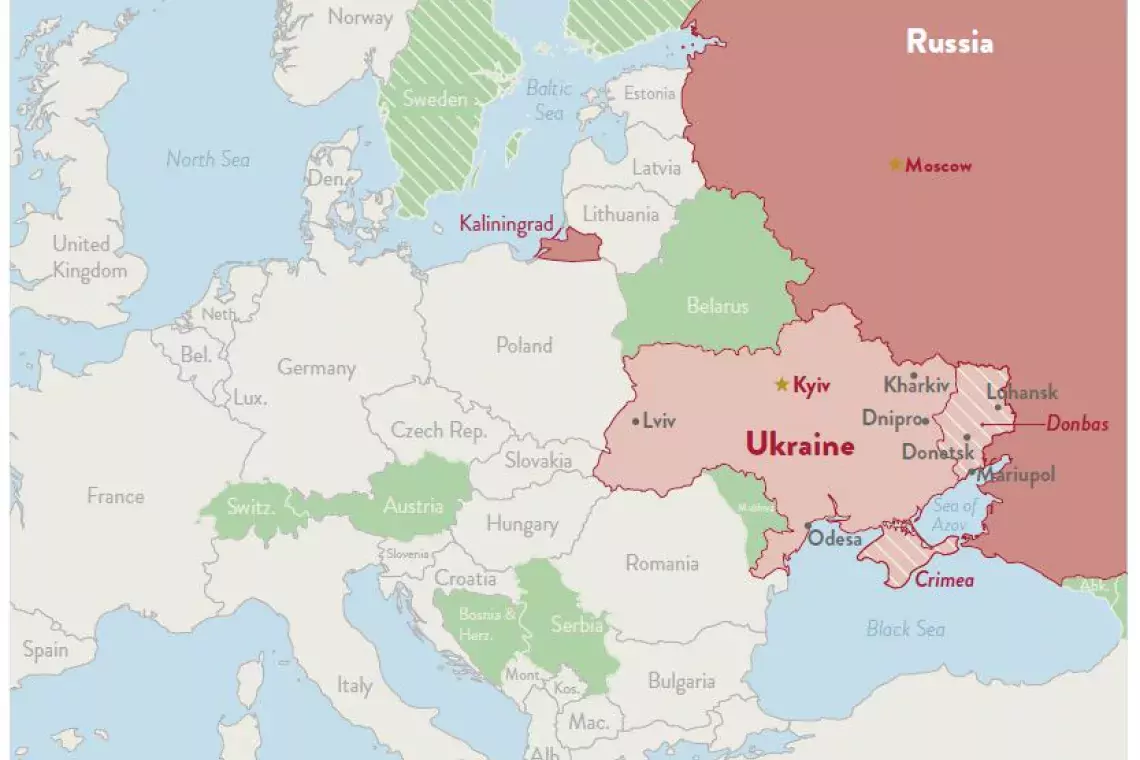For World Humanitarian Day, Examining Federal Efforts in Syria
Friday, August 19 is World Humanitarian Day, designed to increase the public’s awareness about humanitarian assistance and honor humanitarian personnel (including those who lost their lives in the cause of duty).
In anticipation of tomorrow’s World Humanitarian Day, the WatchBlog looks at federal efforts to support humanitarian assistance for people affected by the conflict in Syria.
More than 13.5 million people in need The number of people in need of humanitarian assistance inside Syria has steadily risen since 2012—the UN reported that more than 13.5 million people were in need in May 2016.
(Excerpted from GAO-16-629)
The U.S. Agency for International Development and the State Department provide humanitarian assistance to people affected by the Syrian conflict. However, due primarily to security restrictions, USAID and State coordinate these activities remotely from Jordan and Turkey.
A difficult and dangerous operating environment
The UN reported that, as of May 2016, 4.6 million people inside Syria are located in hard-to-reach areas and more than 500,000 of those remain besieged by ISIS, the government of Syria, or non-State armed opposition groups. In these areas, humanitarian access is heavily restricted or denied outright, leading to malnutrition, poor sanitation, lack of medical care, and increased risk of infectious disease.
The complexity of the conflict and the number of armed groups in Syria has also increased over the past 5 years—something USAID and State’s implementing partners must regularly contend with as they try to deliver aid through shifting battle lines.
(Excerpted from GAO-16-629)
Humanitarian groups are also faced with indiscriminate aerial bombardment by government forces and haphazard shelling by armed opposition groups. For example, there are frequent instances of gunfire, car bombs, barrel bombs, rocket strikes, and mortar attacks near aid facilities, and these organizations must constantly assess the safety of planned delivery routes.
(Excerpted from GAO-16-629)
Aid workers inside Syria routinely risk their lives in order to carry out their mission, and many have lost their lives in the cause of duty:
- Physicians for Human Rights reported that, as of late 2015, there had been 336 attacks on 240 separate medical facilities, and 697 medical personnel had been killed inside Syria.
- The UN reported a total of 87 humanitarian workers killed inside Syria as of April 2016, including 17 UN staff and 53 staff and volunteers from the Syrian Arab Red Crescent.
Continuing to provide lifesaving assistance
Despite the challenges and risks, humanitarian organizations are still trying to reach those in need inside Syria. As of February 2016, U.S. government assistance reportedly reached 4 million people inside Syria every month, helping support activities related to food, shelter, health, sanitation, and education.
(Excerpted from GAO-16-629)
The challenges of providing humanitarian assistance in a conflict zone, as well as State and USAID’s inability to directly monitor their programs inside Syria, call for rigorous financial oversight, such as identifying and responding to fraud risks.
We made 4 recommendations to improve the financial oversight of U.S. programs providing humanitarian assistance to people inside Syria. To learn more about our recommendations, as well as the work being done by federal agencies and their implementing partners, check out the full report.
- Comments on GAO’s WatchBlog? Contact blog@gao.gov.
GAO Contacts
Related Products

GAO's mission is to provide Congress with fact-based, nonpartisan information that can help improve federal government performance and ensure accountability for the benefit of the American people. GAO launched its WatchBlog in January, 2014, as part of its continuing effort to reach its audiences—Congress and the American people—where they are currently looking for information.
The blog format allows GAO to provide a little more context about its work than it can offer on its other social media platforms. Posts will tie GAO work to current events and the news; show how GAO’s work is affecting agencies or legislation; highlight reports, testimonies, and issue areas where GAO does work; and provide information about GAO itself, among other things.
Please send any feedback on GAO's WatchBlog to blog@gao.gov.

